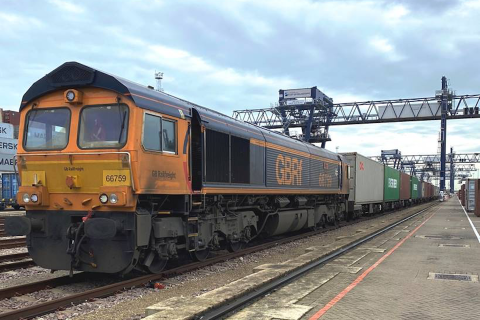Hungary main transit route for Ukrainian grains, says RCG

Since the outbreak of the war in Ukraine, RailCargoGroup has transported between 100,000 and 150,000 tonnes of agricultural cargo from Ukraine to Europe. What used to be a dominantly ocean-driven supply chain is now partially transiting to Europe by rail, with Hungary as the main transit country for the Austrian operator.
Between the outbreak of the war and the end of November 2022, RailCargoGroup (RCG) transported more than one million tonnes of grain from Ukraine to Central and Southern Europe. This is still a minor share compared to ocean transports. Although the port of Odessa is still restricted in its export capacity today, ships exported 10 million tonnes of Ukrainian food to countries of Africa, Asia, and Europe in the three months of August, September and October this year. However, the rail option was not so much considered a solution before the war broke out.
GrainLane
When it became clear that the port of Odessa could not function as usual, rail freight operators in Europe got to work to make the rail corridor a viable option. “With the creation of GrainLane, the online marketplace for agricultural products, the RCG has made a significant contribution to reviving the overland agricultural trade, in addition to the physical transport of grain, especially during the initial phase of the Black Sea blockades”, the railway operator explains.
GrainLane has been connecting Ukrainian farmers with traders, consumers and logistics providers since July 2022. More than 1,000 users already trade corn, soy, wheat and other agricultural products on the platform. Interested parties can discuss details individually with providers, while GrainLane also offers the option of support in the form of transport services through the RCG’s network of partners.

Hungary, Slovakia, Poland
Now, nearly six months later, trains with Ukrainian agricultural products run through Hungary, Slovakia and Poland. The corridor through Hungary is by far the most used by RCG, and serves Italy and Austria in addition to the market in Hungary. In total, this route handled 455,658 tonnes of agricultural goods, with Hungary as the largest importing country (290,754 tonnes).
The route through Slovakia mainly serves Germany, the second-largest importing country with 203,820 tonnes of agricultural products. The route through Poland, also serving Austria, handled 12,285 tonnes of cargo. “The main importing countries are Hungary and Germany, followed by Italy, Romania and Austria”, commented RCG.
Reliable alternative
“Ukraine is the largest agricultural producer in Europe, which means that its agricultural exports are important for the entire continent and further afield. Rail transport has proven to be a reliable alternative even after the resumption of maritime transport, and demand remains high”, the Austrian operator said.
“Rail freight transport has proven its systemic importance for maintaining supply chain stability during numerous international crises.”
You just read one of our premium articles free of charge
Want full access? Take advantage of our exclusive offer






Yes, diversity is Strategy, now to be provided for, by resiliency and redundancy – and all the way!
At, now, most vulnerable, multimodal supply chains, as well however, each “link” and each resp. system, etc., has to prove high quality, thus low risk!
Accordingly, transport modes proving robust, handsomely are rewarded, by willingly paying clients – and vice versa…
(Standards, now causes of frequent, unnecessary risks, have to be outed – from Weak Link – the now most vulnerable mode!)